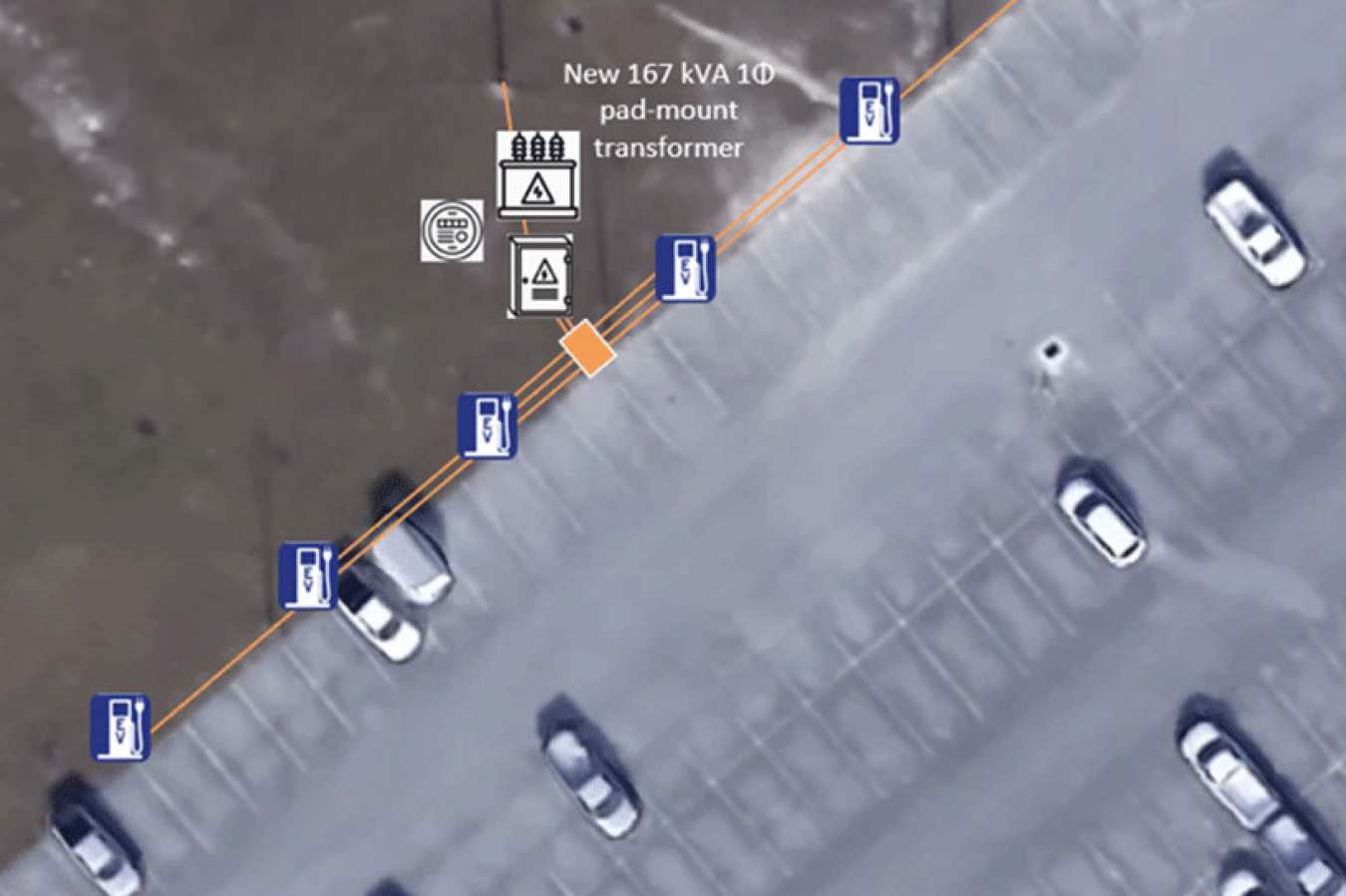The Camp Lejeune sustainability and fleet operations teams partnered with the National Renewable Energy Laboratory (NREL) Tiger Team to plan for the deployment of electric vehicles (EVs) and the installation of EV charging stations. This partnership included completing electric vehicle supply equipment (EVSE) site assessments for fleet vehicles stationed at 14 different parking lots at Camp Lejeune in March 2022, including eight operated by the Marine Corps Base (MCB) Lejeune, four by the U.S. Coast Guard (USCG), and two by Marine Corps Community Service (MCCS) Lejeune.
The Camp Lejeune team completed the Zero Emission Vehicle Planning and Charging (ZPAC) tool to identify opportunities to replace incumbent internal combustion engine vehicles with zero-emission vehicles (ZEV). The ZPAC, developed by FEMP and NREL, identified 204 vehicles at the base which were prioritized for replacement with plug-in hybrid electric vehicles (PHEV) or battery electric vehicles (BEV). During the site assessment, the Tiger Team evaluated the electrical infrastructure capacity at each parking lot including the number and type of EV charging stations and ports. In one case, even though the physical space was available in the parking lot, installing EV charging stations was not cost-effective because of an extremely long conduit and trenching requirement.
The Marine Corps Energy Manager, Amanda Renjifo said, "The installation partnership with the NREL EV Tiger Team allowed us to assess our current and proposed EV purchases and operating conditions of gasoline vehicles in a systematic way that provided immediate actionable projects and gave us the tools to develop more projects in the future."
Project Highlights

Proposed EV infrastructure design for a portion of Camp Lejeune's parking lot.
- A total of 204 PHEVs and BEVs were identified as EV opportunities with the ZPAC tool.
- A total of 111 level 2 EV charging ports were recommended for installation at 14 parking lots to be shared across three different military branches.
- Marine Corps Camp Lejeune used a ratio of 2 EVs to 1 EV charging port and dual-port EV charging stations with longer charging cords to accommodate more parking spots for EV charging.
- The U.S. Coast Guard provided telematics data that allowed NREL to better analyze the number of EV charging ports required for each parking lot, providing a more robust analytical approach.
Key Benefits
- The Camp Lejeune-NREL partnership provided robust EV charging deployment plans that will support Camp Lejeune's sustainability and fleet objectives, serving as an example for U.S. Marine Corps efforts to achieve Executive Order 14057 goals.
- The collaboration and sharing of technical knowledge among fleet managers, electricity infrastructure operators, and NREL's Tiger Team were vital to understanding the EV charging and infrastructure needs at Camp Lejeune.
Impacts
The transition from internal combustion vehicles to EVs could help Camp Lejeune displace up to 579 MT CO2e of tailpipe greenhouse gas emissions annually, further advancing the sustainability goals of Camp Lejeune1. Moreover, these initial EVs will help fleet managers, infrastructure operators, EV operators, and others serve as a model to further EV adoption and infrastructure deployments. According to Resource Manager, Craig Frank: "One very important consideration in this process was the ability to take the existing electrical infrastructure, capacity, and location into account. Considerable cost savings will occur by basing the vehicle charging locations on this infrastructure and minimizing line extensions and additional transformation."
1The emissions are estimated for annual usage of expected acquisition of 204 BEVs and PHEVs using the Zero-Emission Vehicle Planning and Charging Tool (ZPAC).
Learn More
Read the full NREL report, Camp Lejeune Federal Fleet Tiger Team EVSE Site Assessment.

